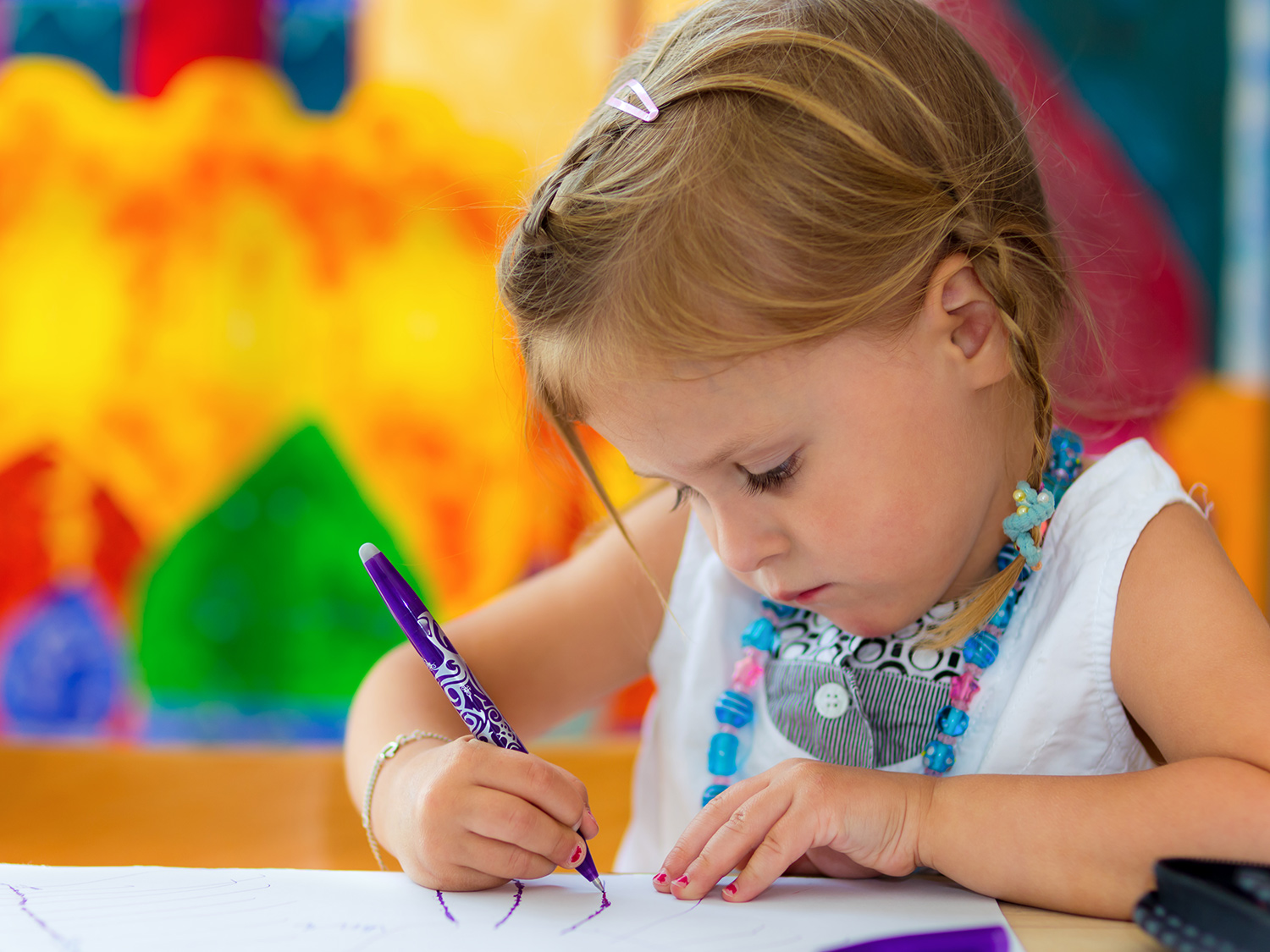Preschoolers are ready and eager to learn! They marvel at new experiences and show great initiative in learning to create and use symbols to represent present and non-present objects (e.g., representational drawings, letters, words, numbers). They have learned (syntactically and pragmatically) to ask questions, the most common of which is “why” or “how.” As a result, they are also learning the words, and the concept behind words, such as “because” or “so” (e.g., Why does my bike go? Because I push the pedals).
By the age of three, children have a basic understanding of category formation (e.g., which items are living vs. non-living, sorting by color, etc.), as well as a basic understanding of cause and effect (e.g., When I run, my heart beats faster). For two fun online ways to foster your child’s cause-and-effect understanding, try Rotate and Roll or Flabby Physics.
Across the preschool years, children are learning to count by rote, perform basic addition (“If I add one more to my group, I will have 4”), sequence events, and tell time on the hour and half hour. They are learning 1-1 correspondence—the ability to map an individual item onto a distinct number…to literally touch each item as they count them as opposed to counting by rote as they sweep their finger across the group. By the time they are six, they are also learning to sort objects by more than one criteria (e.g., size and shape). For a fun sorting game that will let your child sort the same items by different characteristics, try this Alien Competition game. Draw your child’s attention to the fact that different aliens “win,” depending on the criteria used to categorize.
Over the preschool years, children learn to draw intentionally, moving from marks they label to complex images they preplan. For example, most 5-year-olds can draw a person with head, body, arms, legs, facial features, hair, etc. They can name a number of colors and not only arrange items by size or weight, but also create patterns with them and compare items. Matching skills and a basic understanding of symmetry also come online in this period. For a magical symmetry experience, check out Charlie and Lola's Butterfly Gallery.
Learning for children this age is best done through hands-on meaning-driven interactions, where children can discover properties of items before being asked to apply knowledge. For example, allow children to interact with tubes, funnels, and water, before expecting them to problem solve how to get water from a bucket on the ground up to the water table. Learning at this age is not about memorizing, but is instead about uncovering. The process could be Piagetian (e.g., independent discovery) or Vygotskian (e.g., assisted discovery through social interactions with more knowledgeable others in cooperative learning experiences). Children this age thirst for knowledge and can become frustrated if the process feels too hard. Set your child up for success by setting reasonably attainable goals and providing not only support, but also the opportunity to come back to challenges on different occasions through different venues.
Preschoolers devour themes, and using a favorite topic (e.g., dinosaurs, fire trucks, fairies, etc.) is often a way to invite children to take on additional challenges. Think puzzles, games, experiments, stories, actions, open-ended toys, and anything that involves pretend play. Imagination, creativity, language development, social development, intellectual development, and academic learning all go hand-in-hand at this age.
Children are by definition egocentric during this time, which means that they are not able to spontaneously take on the viewpoint of another. They literally believe that their thoughts are shared by everyone else. It is not until children enter concrete operations (around the age of 7 or 8) that egocentrism begins to wane.
Preschoolers also have not learned to independently draw inferences and often need to be guided to making conclusions or generalizations. For example, they may stumble upon the discovery that 3+5=8, but will not yet understand that every time they add 3 items to 5 items they will get 8 items. It is only through guidance, trial-and-error, and development that children will come to this type of reasoning on their own. However, active manipulation, observations, and involvement in experiences and situations allows them to form theories that they then confirm or refute. For example, they will wonder what will happen if they mix yellow and blue paints and revel in the discovery of green. They will test this discovery in multiple settings, remaining surprised for a period of time with each confirmation. Gradually, however, the knowledge becomes theirs to command and apply in various settings. Click here for some fun ways to encourage this level of thinking and learning.

